
No, birds do not pee in the same way mammals do. Instead, they excrete waste in the form of uric acid, which is a white, semi-solid substance. This uric acid is combined with their feces and expelled together as a single substance, which helps conserve water and keep their bodies lightweight for flight.
Birds, with their captivating beauty and aerial prowess, have always piqued our curiosity. Yet, one question persists: Do birds pee? In this article, we’ll embark on a journey into the fascinating realm of bird excretion, exploring the unique mechanisms that set avian waste disposal apart from our own. Join us as we uncover the truth behind this age-old mystery.
Bird Excretion Mechanisms
When it comes to waste disposal, birds and mammals take distinctly different paths. While mammals have a familiar process involving liquid urine and solid feces, birds have evolved a unique system that efficiently conserves water and aids in their airborne lifestyles.
In mammals, waste disposal is a two-step process. The urinary system filters waste products, primarily in the form of liquid urine, from the bloodstream. This urine is stored in the bladder until it’s expelled from the body through the urethra. The solid waste, feces, is produced by the digestive system and stored in the rectum until it’s eliminated separately.
Birds, on the other hand, have a single, multi-purpose chamber called the cloaca, which serves as the exit point for both solid and liquid waste. Here’s where the fundamental difference lies: birds don’t produce liquid urine as mammals do. Instead, they excrete waste in the form of uric acid, a white, semi-solid substance. This uric acid is combined with their feces, forming a single substance that exits through the cloaca.
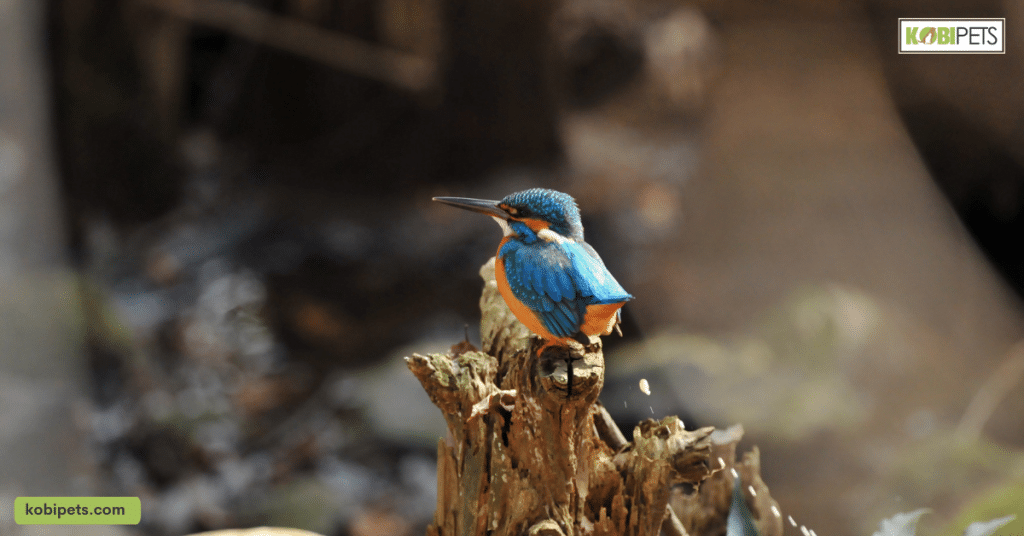
The Anatomy of Bird Excretion
In avian biology, the cloaca is the central hub for waste elimination and reproduction, setting birds apart from mammals with their streamlined approach. Unlike mammals, where separate systems handle these functions, birds have consolidated them into the cloaca for efficiency.
Mammals use distinct urinary and digestive systems, with liquid urine stored in the bladder and expelled through the urethra. In contrast, birds excrete uric acid, a semi-solid substance, combining it with feces and expelling both through the cloaca.
This adaptation not only conserves water, a vital resource for birds but also contributes to their lightweight bodies, crucial for their aerial prowess. The cloaca’s role in this unique excretion mechanism underscores birds’ remarkable adaptability to diverse environments.
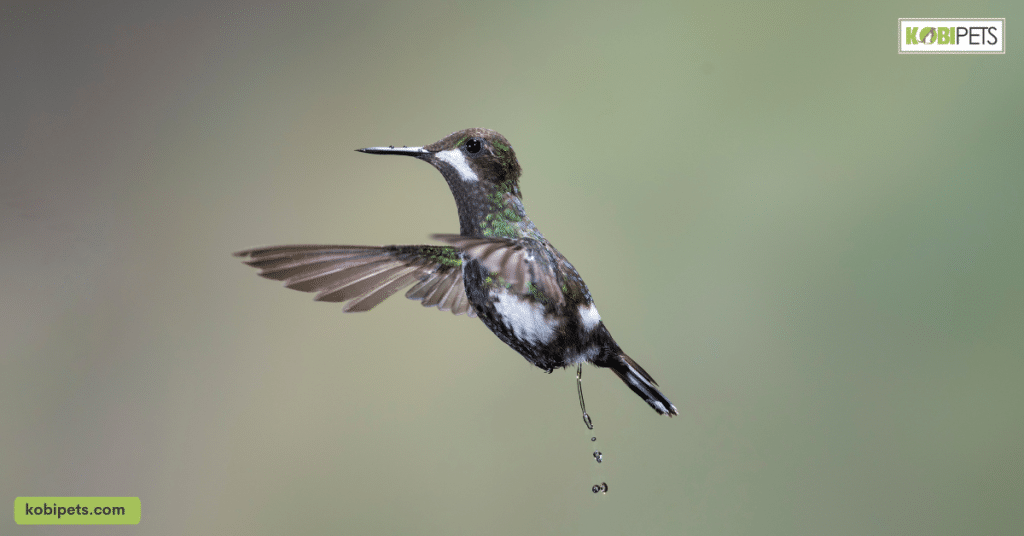
Uric Acid vs. Urine
In our exploration of avian excretion, we’ve uncovered the intriguing fact that birds don’t pee as mammals do. Instead, they excrete waste in the form of uric acid, a white, semi-solid substance. In this section, we’ll dive deeper into the world of uric acid, understanding why birds have evolved this unique excretion method and the profound advantages it offers, particularly in terms of water conservation.
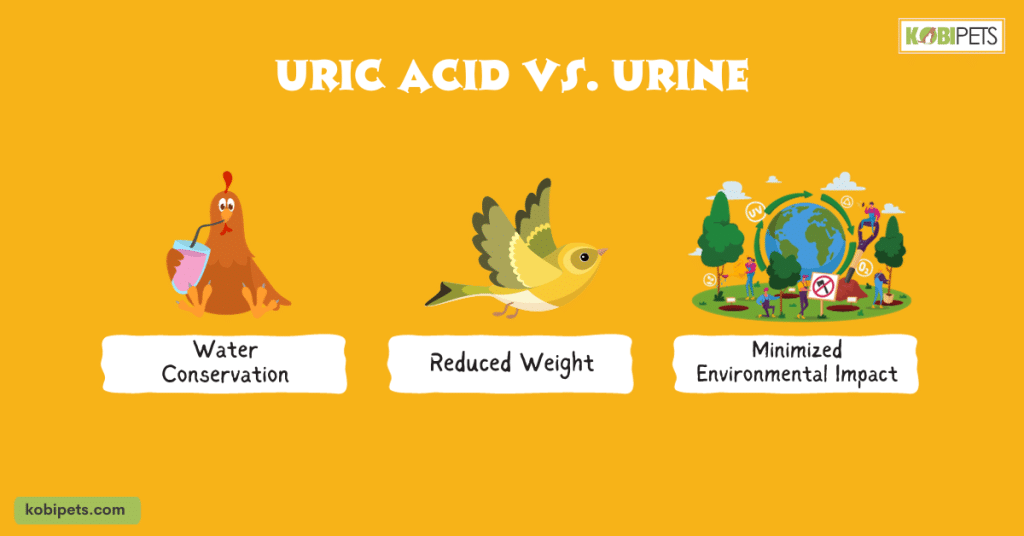
Uric Acid vs. Urine
1. Water Conservation
Uric acid is a critical player in birds’ ability to thrive in various environments. Unlike liquid urine, which carries away a substantial amount of water from the body, uric acid contains very little water. This feature is especially beneficial for birds in arid regions, where every drop of water counts. By minimizing water loss through excretion, birds can stay adequately hydrated, even in the most challenging conditions.
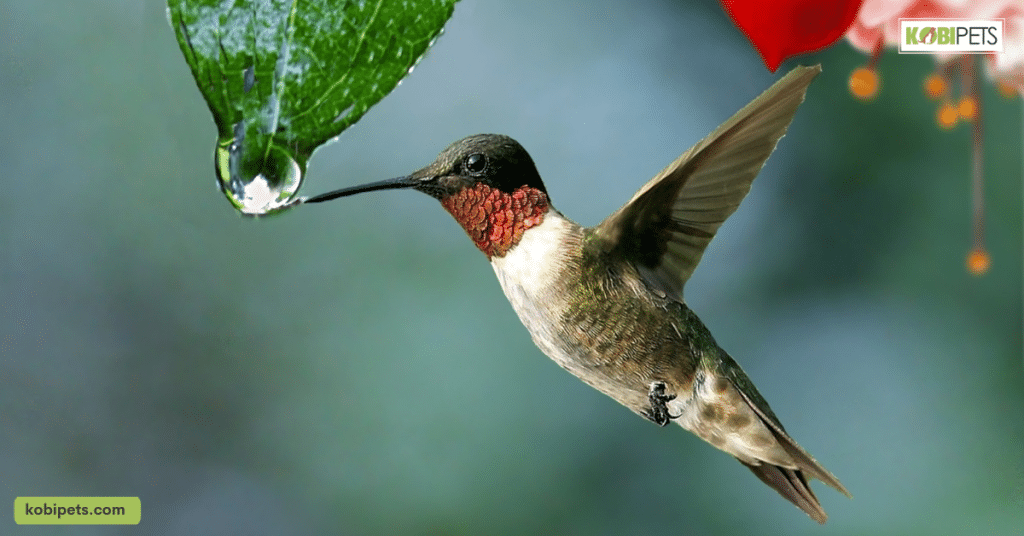
2. Reduced Weight
For birds, weight is a constant concern, especially for those who take to the skies. Liquid urine can be heavy, and carrying excess weight can hinder a bird’s flight abilities. Uric acid’s semi-solid form is lightweight, contributing to the overall efficiency of a bird’s body structure and aiding in their graceful flight.
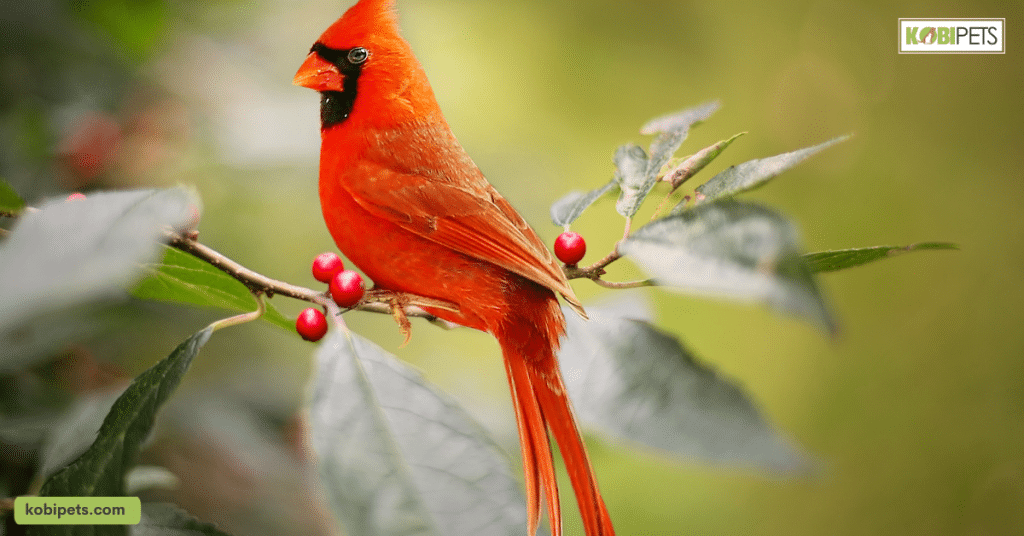
3. Minimized Environmental Impact
The semi-solid nature of uric acid combines with feces to form a single substance, making waste disposal more efficient and minimizing its environmental impact. This adaptation aligns with birds’ ability to adapt to a variety of ecosystems, demonstrating their remarkable ecological versatility.
In the avian world, uric acid takes center stage as a critical adaptation, helping birds conserve water, reduce weight, and maintain their ecological harmony. By choosing uric acid over liquid urine, birds have demonstrated their ability to evolve innovative solutions that enhance their chances of survival and success in diverse environments.
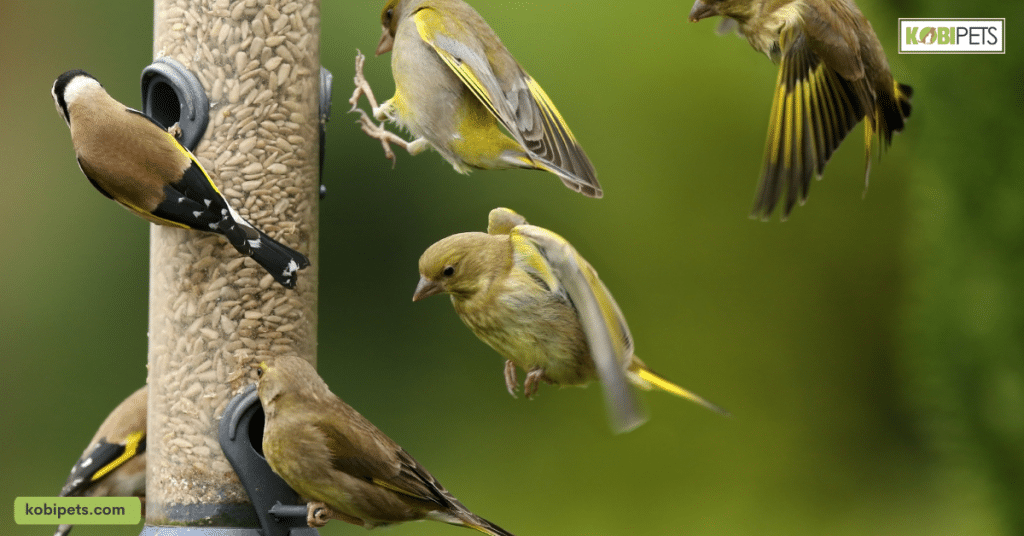
Birds and Water Balance
Birds are masters of managing their water balance, a skill essential for their survival, particularly during flight. Their excretory system plays a pivotal role in this delicate balance. By excreting waste in the form of uric acid, which contains minimal water, birds minimize water loss.
This adaptation allows them to maintain hydration levels efficiently, even in arid environments. During the flight, where every ounce matters, the reduced weight of uric acid compared to liquid urine is especially advantageous.
Birds have finely tuned their excretory system to ensure they can soar through the skies with grace and precision, demonstrating the remarkable adaptability of these feathered creatures.
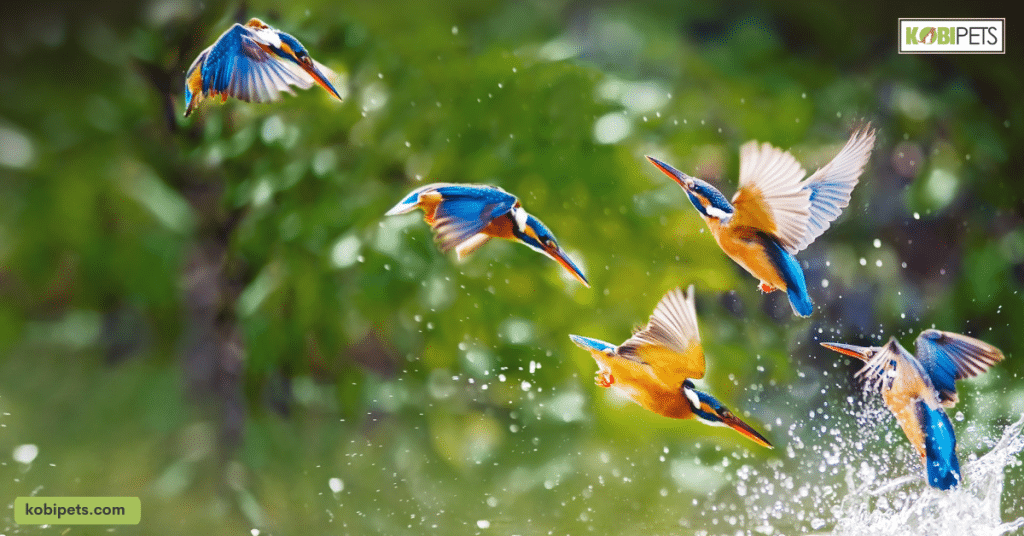
Conclusion
As we conclude our exploration of bird excretion, we’ve unveiled the unique mechanisms that birds employ to thrive in various environments. From their versatile cloaca to the use of uric acid, these adaptations help birds conserve water and maintain their lightweight bodies, essential for flight.
This showcases nature’s remarkable ability to innovate and adapt. So, the next time you observe a bird in action, you can marvel at the intricate biology behind their waste disposal, a testament to the wonders of the natural world.






